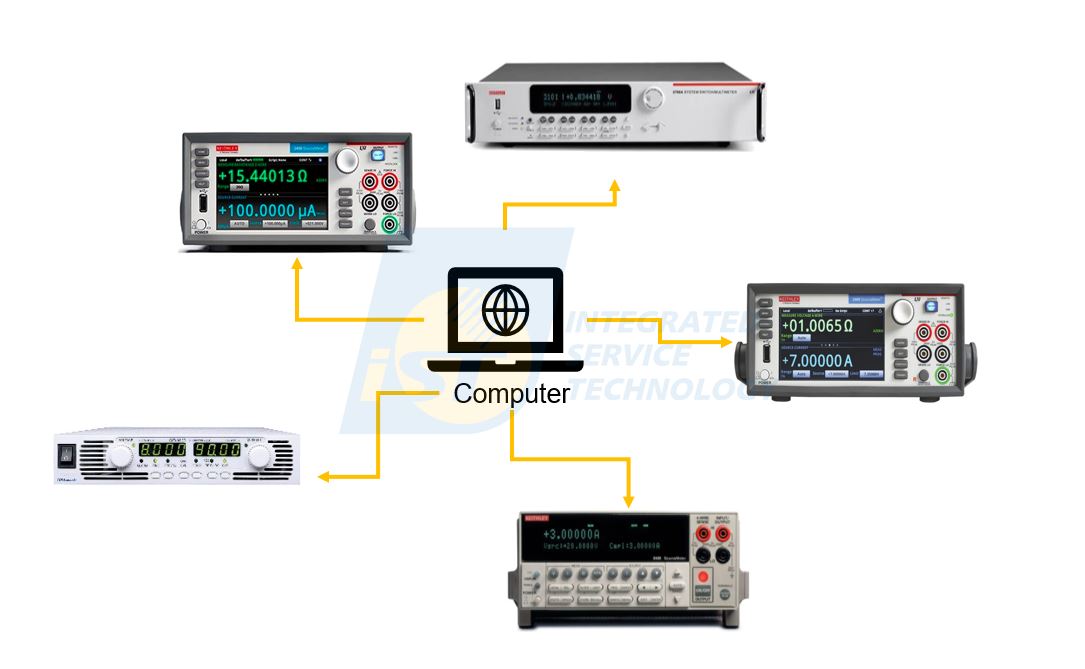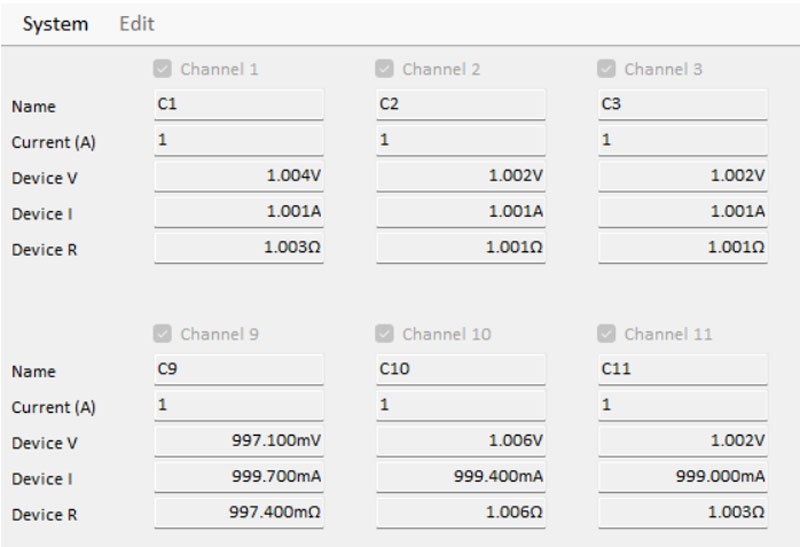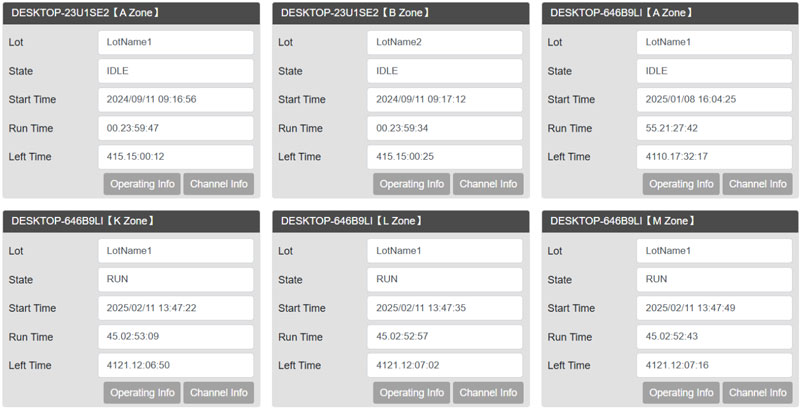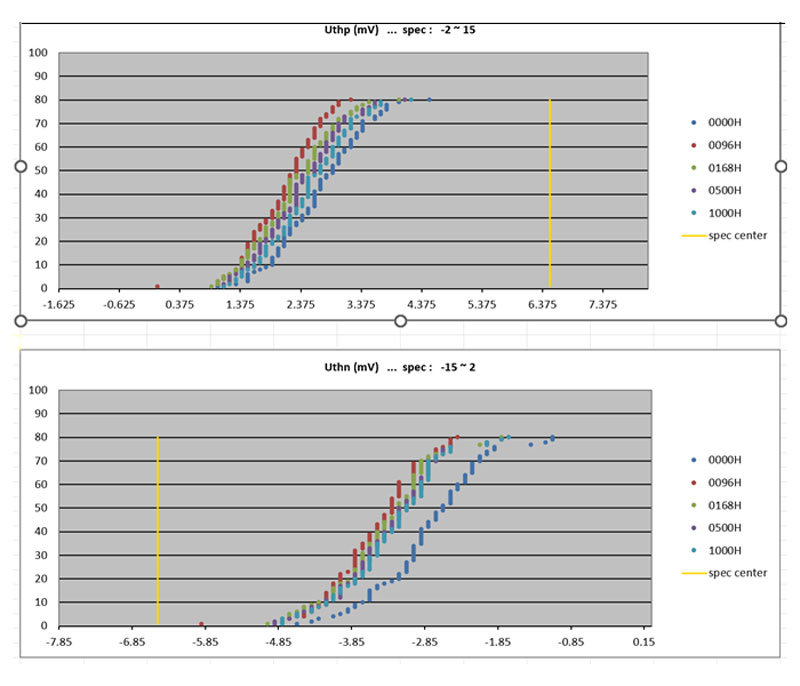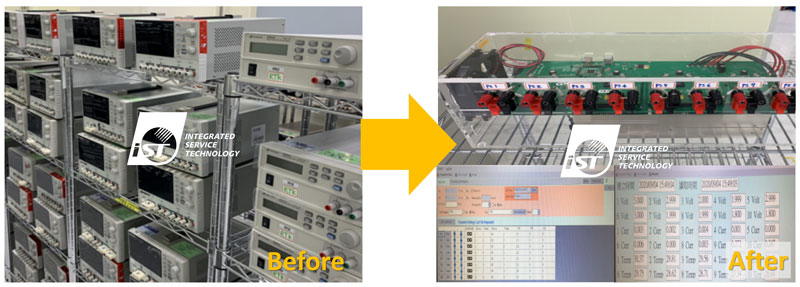Issued Date:2025/5/20Reliability Testing with Real-Time In-situ Monitoring
Issued By:iST
Reliability testing often requires long validation periods. Are you relying solely on external lab data and passively waiting for results? During testing, how can you gain real-time access to product data to shorten decision-making cycles and accelerate development efficiency?
Reliability Testing with Real-Time In-situ Monitoring
The electronics industry is evolving rapidly, especially in fields like AI, electric vehicles, and high-voltage products. Current reliability testing is increasingly challenged to keep up with rapidly evolving technical requirements in standards and equipment.
1. Standards and Challenges
As market demand for innovative products increases, companies are under growing pressure to shorten development timelines. The accelerated pace from design to pilot runs and mass production significantly compresses the product development cycle. This places higher demands on the efficiency and flexibility of reliability testing. In many cases where established reliability standards for emerging technologies are not yet available, validation teams must independently develop customized test modules and support mechanisms to address monitoring and testing needs in different scenarios.
In addition, as chip designs become increasingly integrated and customized, process and material reliability testing methods must also be adapted to shorten validation timelines. One of the major challenges in today’s reliability testing industry is how to quickly adjust testing parameters across various specifications to meet each customer’s unique validation methods and corresponding verification conditions.
2. Testing Requirements
The increasing diversity of voltage, current supply, and measurement specifications requires support for various resolutions and integration with automated instrumentation control. Additional functional demands that arise during testing, such as Pulse Width Modulation (PWM), Dynamic Feedback Detection (DFD), and Power Expansion (PE), as well as software adjustments to meet specific needs, are becoming increasingly common in reliability validation. Relying solely on standard equipment or traditional hardware architecture often falls short of meeting these demands. The ability to expand the capabilities of standard platforms and rapidly develop flexible testing methodologies directly impacts the completeness of testing and the time to market.
In this edition of iST Classroom, we explore how a project-based management model can unify test data control and reduce the back-and-forth communication with laboratories. This approach also minimizes the risk of miscommunication. Through an integrated module of connected software, firmware, and hardware, real-time measurement data can be processed on the fly to ensure testing accuracy and timeliness. iST’s latest Global Smart Reliability Center combines intelligent monitoring, real-time feedback, and global connectivity to help engineers build efficient, accurate, and remotely monitorable testing systems. This enhances the quality of product reliability verification while reducing front-line labor requirements.
Reliability Testing with Real-Time In-situ Monitoring
Reliability Testing with Real-Time In-situ Monitoring
1. Three Key Challenges in Semiconductor Reliability Testing Driven by AI and Electric Vehicle Development
(1) Reliability Testing Challenges for AI and EV Products
High-performance AI chips must operate stably over extended periods, but factors such as temperature fluctuations, voltage instability, and thermal dissipation issues can all impact performance. In electric vehicles, power management systems demand high reliability. Under high-voltage conditions and rapid charge-discharge cycles, ensuring the reliability of battery modules and control systems is a critical challenge.
(2) Challenges in Verifying Highly Integrated Chips, Customized Designs, and Advanced Process Materials
When multiple system modules are integrated into a single chip, several issues often arise. These include increased power consumption due to poor heat dissipation, complex startup sequences, one-to-one chip drive monitoring, the need for targeted monitoring or software-driven activation of specific functional areas, high-resolution measurements for particular pins, and integration with specialized instruments for validation.
Addressing these challenges requires coordination across test equipment, instrumentation, and control systems to quickly provide customers with feasibility assessments and tailored validation approaches. Delivering viable testing solutions within limited timeframes and aligning with customer requirements demands access to sufficient design resources and data libraries.
During early-stage system validation, teams must respond quickly to anomalies encountered under test conditions and adjust experimental parameters accordingly.
(3) Limitations of Existing Test Equipment and Conventional Practices
Current testing platforms are generally categorized as either integrated systems or modular setups. Integrated systems combine all acceleration conditions such as temperature, voltage, and monitoring within a standardized setup. These systems are often constrained by preset specifications, including limitations on circuit boards and test fixtures.
Modular systems, on the other hand, rely on customized assembly according to project needs, combining power supply units, ovens, driver circuits, and monitoring tools. These are integrated through software, firmware, and hardware development.
Integrated systems offer limited flexibility and may incur higher costs, while modular systems require lengthy development cycles, uncertain timelines, and significant design resources for evaluation. Acceptance of such systems also involves higher uncertainty in meeting specifications.In addition, current reliability testing heavily relies on manual inspections. When abnormalities occur, they can only be reported by personnel, making it difficult to pinpoint the exact time of the incident or respond promptly during the testing process.
2. iST’s Solution: The Global Smart Reliability Center
To address the challenges outlined above, iST has collaborated with industry partners to launch the Global Smart Reliability Center in Q2 of this year. By leveraging a rich design database and modular architecture, the center standardizes various testing requirements, instruments, user interfaces, and controller functionalities into modular components. An integrated online database and project management system enables rapid assessment based on customer-specific validation processes, providing tailored and efficient testing solutions.
The system also incorporates cybersecurity frameworks, enabling secure login access for remote monitoring. Real-time data processing and graphical visualization, combined with life model predictions, ensure parameter accuracy and immediate detection of anomalies. Upon any irregularities, engineers and customers are promptly notified to take corrective actions without delay.
The following approaches help improve product reliability testing through smart monitoring, real-time response, and global connectivity:
(1) Independent Channel Smart In-situ Monitoring
The system not only enables real-time data feedback, but also allows for independent monitoring of each test sample’s voltage, current, and temperature to ensure testing accuracy.
Figure 2: In-situ monitoring and instant data feedback for test samples
(Source:Design Platform)(2) Real-time Response
If any test sample experiences abnormal conditions—such as excessive temperature or current—the system will immediately cut off power to that specific unit, preventing further degradation and ensuring the accuracy of the analysis.
Figure 3: Real-time response interface
(Source:Design Platform)(3) Global Connection
Customers can remotely access and monitor testing progress in real time, enabling more convenient and efficient global test management.
Figure 4: Remote access for in-situ monitoring of test progress by customers
(Source:Design Platform)(4) Data Analysis
Using EDA tools, engineers can analyze how various parameters change over time during testing, providing clear insights into engineering data before mass production.
Figure 5: Utilizing EDA analysis tools for comprehensive engineering insights before mass Production (Source: efuntek)
3. Case Study
Case 1: Enhancing Multi-Channel Power System Setup and Software Control Mechanisms
The customer needed independent voltage stress setups and real-time tracking for each sample. However, the test setup process was complex, time-consuming, and prone to errors.
To address these challenges, we developed a flexible, multi-channel power system customized to the client’s specifications, paired with versatile software control mechanisms.
This solution reduced setup resources by 70%, enabled complete data collection, and ensured successful test execution. The system also allows for future configuration adjustments to support evolving customization needs.
Case 2: Rack-Mounted Custom Equipment with Automated Data Logging
The client managed a wide range of product types, requiring various instruments to support different test conditions. The setup process was overly complex and time-intensive due to the number of instruments involved.
To solve this, we integrated application modules and instruments into a standardized rack-mounted system, which significantly reduced the error rate during setup. We also developed specification-compliant instruments to deliver a fully functional and versatile testing solution.
This improvement not only met the client’s application needs and accelerated testing schedules, but also allowed flexible configuration adjustments for different market demands—eliminating the need for frequent equipment replacements. All test data is automatically logged, with built-in features such as power sequencing, protection, delay, and warning functions, enhancing both operational efficiency and accuracy.
Amid the rapid growth of advanced applications such as AI, high-performance computing (HPC), and electric vehicles, semiconductor reliability testing standards remain incomplete. The industry is in urgent need of flexible and efficient testing solutions to ensure product stability and maintain competitive advantage.
iST has developed a smart, real-time, and remotely accessible testing system that integrates intelligent monitoring, immediate response mechanisms, and global connectivity. This system enables automatic shutdown upon anomaly detection, significantly reducing testing time while improving product reliability—delivering tangible benefits through technological innovation.
The Global Smart Reliability Center at iST provides a comprehensive validation environment for component reliability and is applicable to key sectors including foundries, ASIC design houses, electric vehicles, and high-voltage product development. With evolving industry standards and boosting testing efficiency, we remain committed to advancing semiconductor reliability verification technologies.
For more information about iST’s Global Smart Reliability Center, please contact Ms Anne Lee at +886-3-5799909 ext. 8906 or email: web_GSRC@istgroup.com; marketing_tw@istgroup.com。

